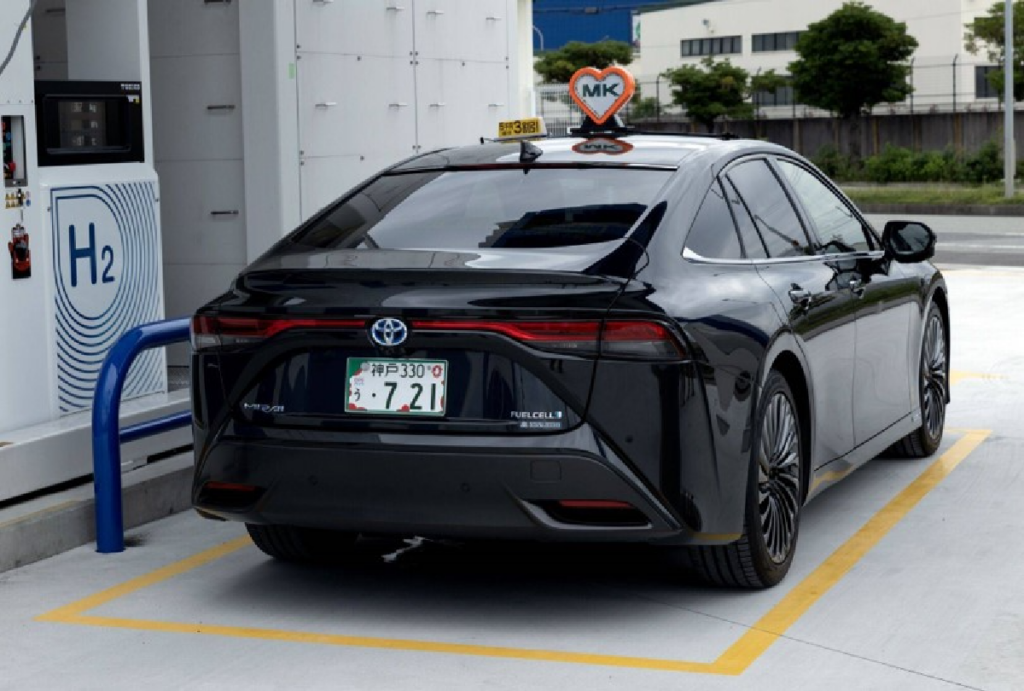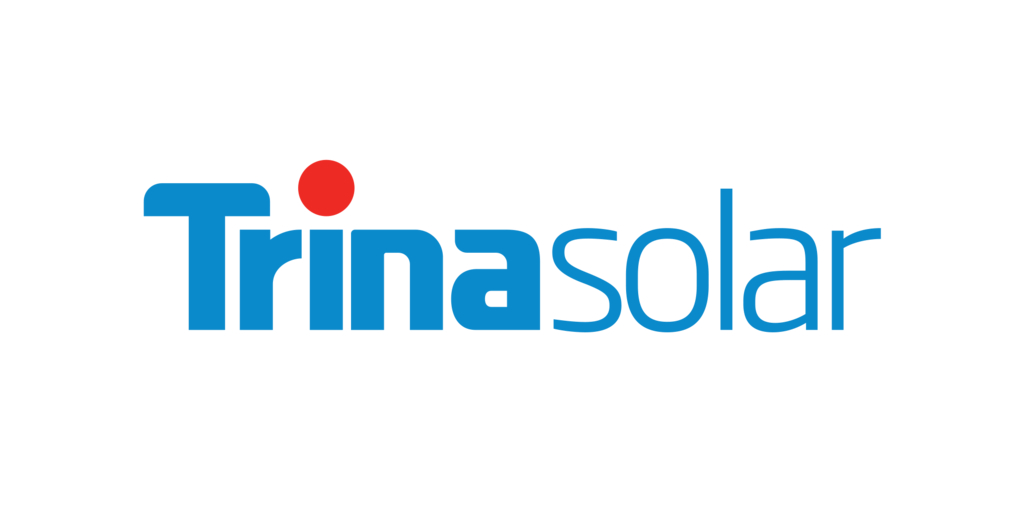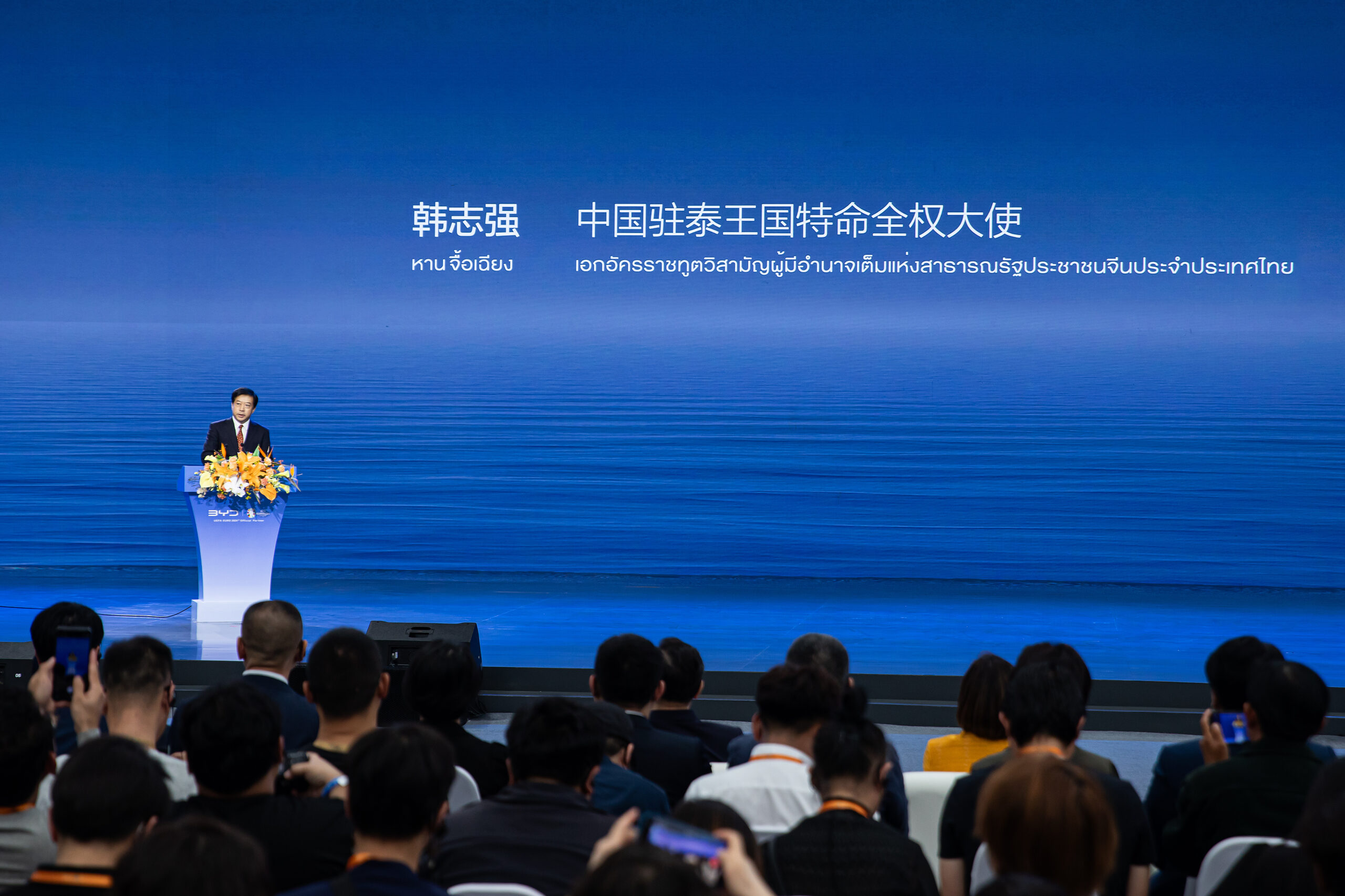MK West Group, a taxi operator in Kobe, a city on Osaka Bay in central Japan more famed for its heavily marbled beef than its passenger cars, is a case in point.The company, an upmarket operator that runs a fleet of luxury vehicles and prides itself on smartly dressed drivers who see themselves more as chauffeurs, also has a suite of greener cars including hybrid versions of Toyota Motor Corp.’s Crown, Camry, Alphard and Lexus models.
About two months ago, it added two Toyota Mirai hydrogen fuel cell vehicles to the mix. According to Group President Yoshiaki Aoki, that experience has been somewhat underwhelming.
It’s not that there’s anything wrong specifically with the cars, good looking mid-sized sedans with Lexus-level luxury. Rather it’s the high cost of hydrogen, which Aoki says should be subsidized more aggressively if the government is serious about using the fuel as a green-energy option.
“Two months into using these hydrogen fuel cell vehicles and the cars don’t even run 10 kilometers” compared to the cost per liter of gasoline, Aoki said.The cars’ biggest selling point is they can be recharged, or filled, super quick — handy for a taxi company where having drivers idle means lost money. The Mirais take between three to five minutes to have their tanks refilled, better than an electric vehicle, which takes at least 30 minutes on a fast charger.
But compared to a hybrid car, for example, the cost of a hydrogen fuel cell vehicle rises by around ¥1 million ($7,100) if it runs say 150,000 kms a year as a taxi, Aoki said.
“You’d have to be crazy to buy a FCEV, even considering the environmental angle. And customers aren’t prepared to pay extra money because the taxi they’re using is good for the environment.”
Still, Aoki hasn’t completely written off hydrogen fuel cell vehicles just yet. He says he hasn’t figured out whether longer term he’ll prefer FCEVs or EVs, and that decision will likely come down to cost, the infrastructure supporting both technologies and available models.Considering taxi drivers are on the road almost 24-7, requiring lots of fuel, if the high cost of hydrogen doesn’t come down significantly, Aoki says as better electric car models surface, MK West will probably switch more of its fleet to EVs, even if they do take longer to charge.
As something of car buff, Aoki also bemoans the lack of FCEV models available. He’s pinning some hopes on Toyota’s new FCEV Crown, a five-seater sedan set to be released later this year.
Aoki also believes that were individual drivers to embrace hydrogen fuel cell cars, the infrastructure in Japan would “be built in no time,” with the help of energy companies like Idemitsu Kosan Co. and Eneos Corp.MK West for its part has a hydrogen station near its headquarters that was installed by Air Liquide SA. About three other cars on top of MK West’s two come there almost every day to fill up, Aoki said, not a ringing endorsement considering Mirai’s first model went on sale almost a decade ago.
Yoshihiro Ueno, a senior executive manager at Air Liquide in Japan, said Air Liquide built the station there to make it easy for taxi drivers to refuel as they come back to base. “This also solved any infrastructure-related concerns for the taxi operator,” Ueno said.
But more broadly, “most companies operating hydrogen stations for mobility purposes aren’t in the black because there’s no market for it yet,” he said. There are only around 8,000 hydrogen-powered passenger vehicles in Japan, a minuscule portion of the some 80 million cars on the nation’s roads.Hydrogen station providers do get subsidies from the government to cover installation and operation costs but there isn’t sufficient policy direction from Japan’s current ruling party and it’s become “a chicken and egg problem,” Ueno said.
“There’s no demand so there are no stations and there are no stations so there’s no demand, and this has been going on for quite some time,” he said. “Something has to break through.”







